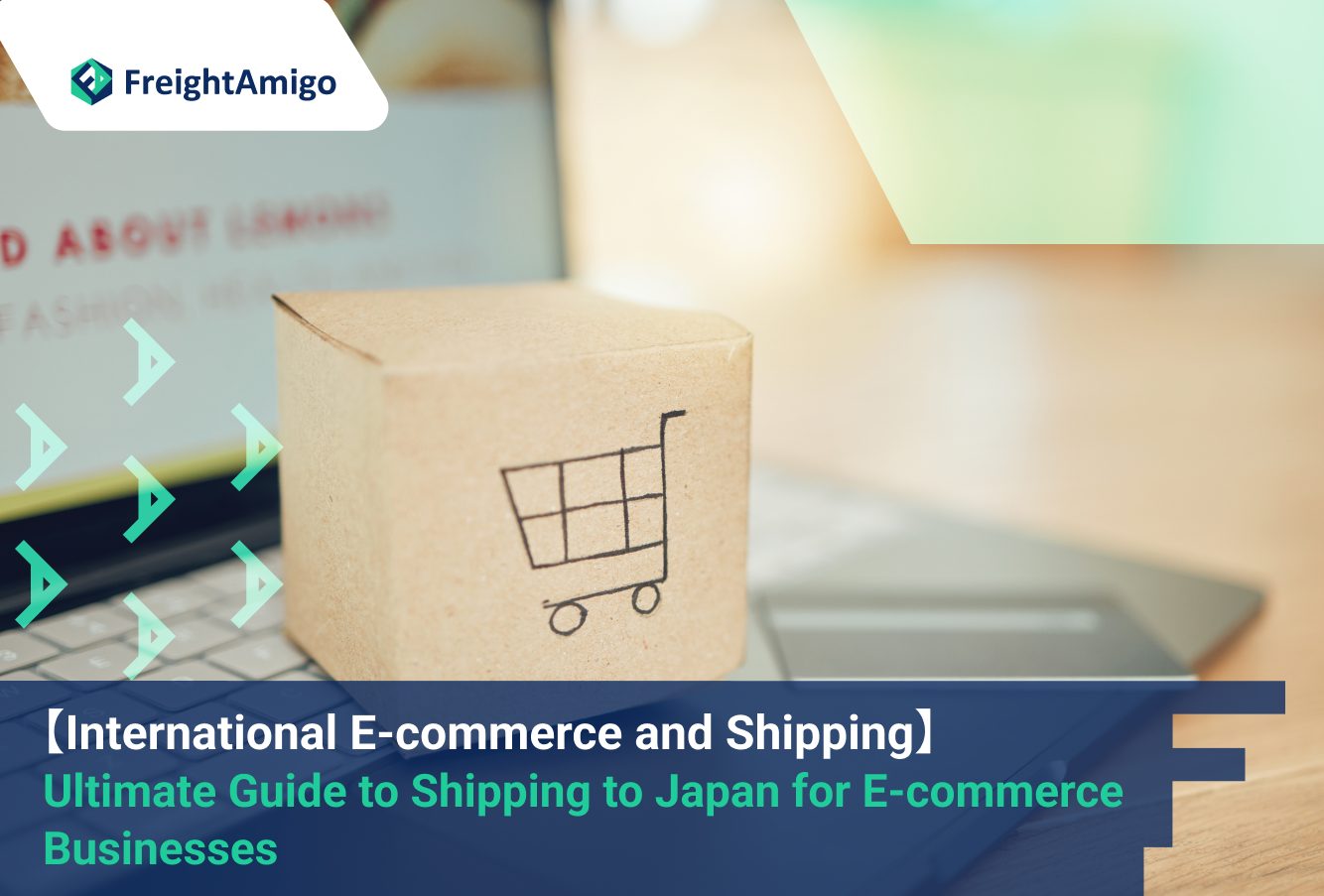January 16th, 2024: Jacob Leung– Marketing Analyst at FreightAmigo
Expanding your e-commerce business to Japan can open up new opportunities and tap into a market with enormous spending power. However, shipping to Japan comes with its own set of challenges and considerations. In this comprehensive guide, we will explore the key factors you need to know when shipping to Japan, from understanding customs regulations to choosing the right shipping options and logistics providers. By following this guide, you can optimize your shipping strategy and ensure a seamless experience for your Japanese customers.
Want To Compare The Best Express, Air Freight, Sea Freight, Rail Freight & Trucking Rates So As To Have Better Control On Cost?
Importing Goods to Japan
Expanding your e-commerce business to Japan can open up new opportunities and tap into a market with enormous spending power. However, shipping to Japan comes with its own set of challenges and considerations. In this comprehensive guide, we will explore the key factors you need to know when shipping to Japan, from understanding customs regulations to choosing the right shipping options and logistics providers. By following this guide, you can optimize your shipping strategy and ensure a seamless experience for your Japanese customers.
Understanding Consumption Tax
In Japan, consumption tax is applied to the declared value of products, including insurance and shipping fees. It is important to calculate and account for consumption tax when pricing your products and determining the overall cost of shipping to Japan. Understanding the implications of consumption tax will help you optimize your pricing strategy and avoid unexpected expenses.
Shipping Options and Duties
When shipping goods to Japan, you have several options to choose from, including postal services and courier companies. Each option comes with its own set of duties and taxes that may need to be paid by the consumer. It is important to understand the thresholds for duties and when the consumer is required to pay upfront or upon delivery. By choosing the right shipping option and understanding the payment process for duties and taxes, you can provide a seamless shipping experience for your customers.
Custom Value and Declaration
Determining the custom value and declaration of your products is essential for accurate assessment of duties and taxes. The most commonly used method is the transaction value, which is the amount for which the product was sold. However, there are alternative methods for valuation in cases where there is no transaction value available. Understanding how to identify the custom value and declaration will help you comply with customs regulations and avoid any unnecessary delays or penalties.
Currency Conversion and Exchange Rates
If you are shipping from a country with a different currency than Japan, you need to consider currency conversion. The Japanese customs will automatically convert the declared value from the original currency to Japanese yen using the prevailing exchange rate. It is essential to stay updated on the current and past exchange rates provided by the Japanese customs to accurately calculate the value of your products.
Rules of Origin
To benefit from preferential duty rates or duty-free status, it is necessary to understand the rules of origin. Japan has trade agreements with various countries, and complying with the origin rules can result in significant cost savings. Assessing the origin of your products and understanding the benefits of free trade agreements will help you optimize your shipping strategy and reduce costs.
Substantial Transformation of Raw Materials
Determining the substantial transformation of raw materials is crucial when assessing the origin of your goods. This is particularly important when you import raw materials from one country and transform them significantly in another. Understanding the concept of substantial transformation and its significance in determining the origin of your products will help you comply with customs regulations and take advantage of preferential duty rates.
Specific Categories of
Certain categories of goods are subject to duties and taxes regardless of their origin or value. It is important to be aware of the specific categories where duties cannot be exempted and where the thresholds do not apply. Leather bags and gloves are examples of such goods. By understanding the specific categories of goods subject to duties, you can accurately calculate the total cost of shipping and avoid any surprises for your customers.
Conclusion
Shipping to Japan for your e-commerce business requires careful planning and consideration of customs regulations, taxes, and duties. By understanding the prohibited goods, consumption tax, shipping options, and declaration procedures, you can navigate the process with ease and ensure a successful shipment to Japan. By providing a seamless shipping experience, you can build customer trust and expand your business in the Japanese market.
Remember, effective shipping to Japan requires attention to detail, compliance with customs regulations, and a customer-centric approach. By following the guidelines outlined in this guide, you can optimize your shipping strategy and provide a seamless experience for your Japanese customers.
There Are Different Options For Cargo Transportation. If You Want To Choose The Most Convenient And Suitable Solution, It Is Best To Have The Full Support Of Logistics Experts! If You Are Planning To Ship Goods Overseas, Please Go To The FreightAmigo Page For Inquiries.
===
Read More:
【AI Integration in Supply Chain】 Revolutionizing Supplier Relationship Management
【Innovative Technologies】 The Role of AI Integration in Supply Chain Management
【Leveraging Smart Warehouse Inventory】 A New Era of Inventory Control
===
If you have any inquiries on logistics/supply chain, feel free to contact FreightAmigo now:
Chat with us online OR Hotline: +852 28121686 OR WhatsApp: +852 27467829









































